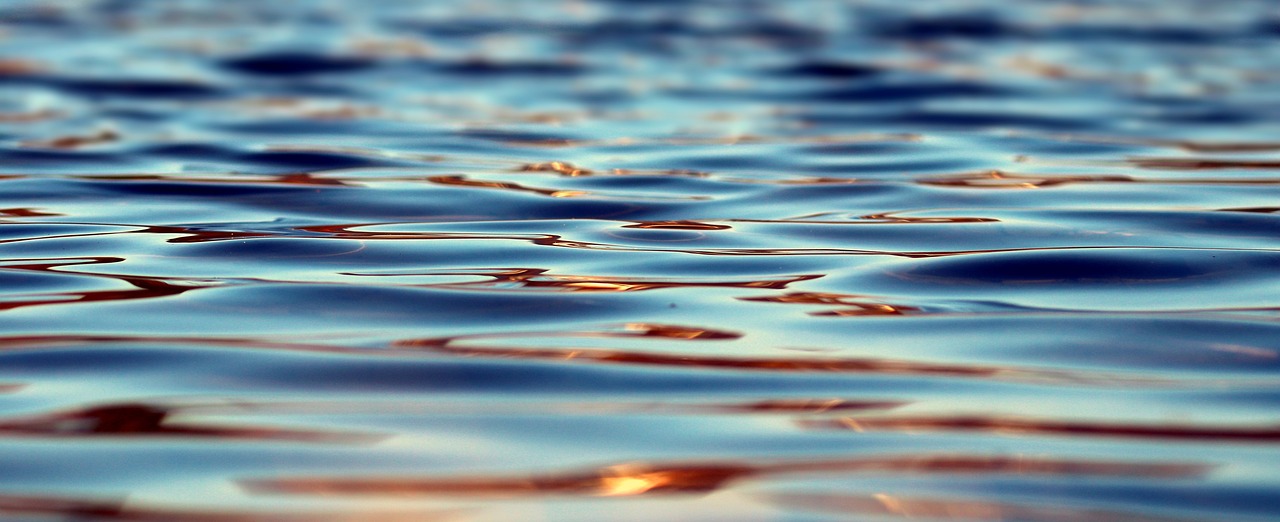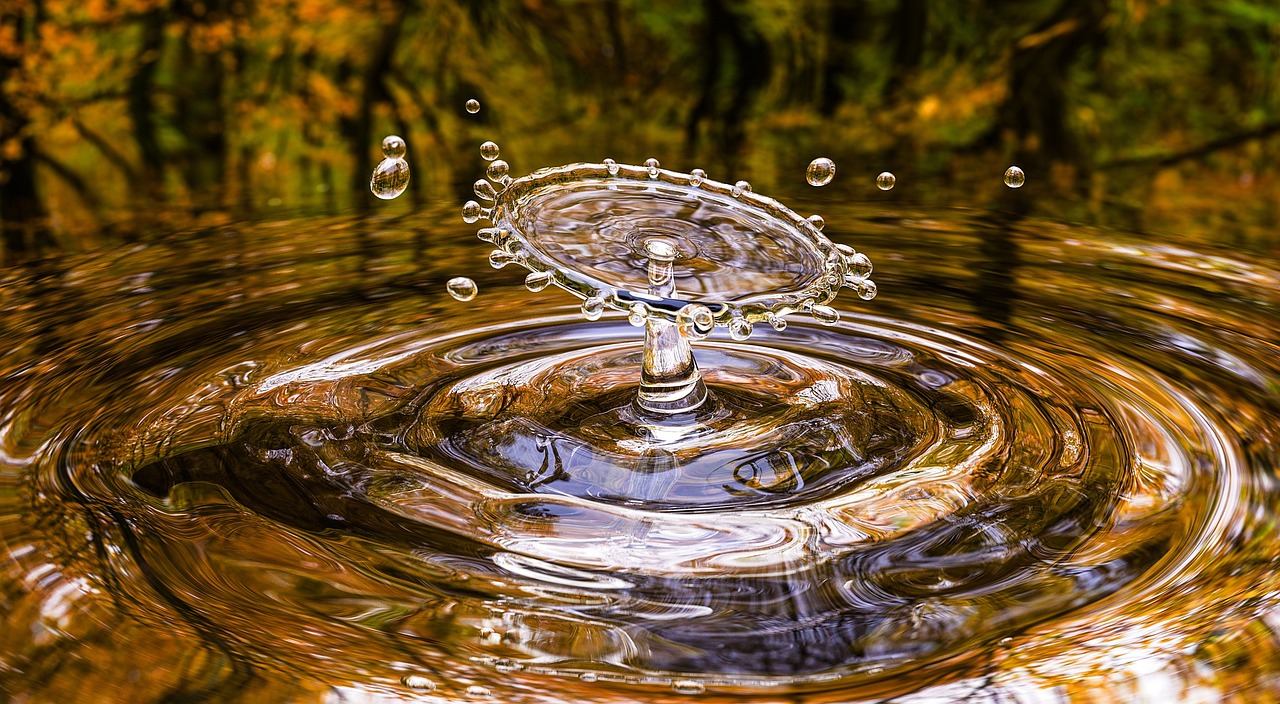Imagine a world without water, where parched lips and desperate thirst consume every waking moment. We often overlook the importance of water in our daily lives, taking for granted its ability to sustain life. From quenching our thirst to maintaining bodily functions, water plays a vital role in our survival. In this article, we will explore the incredible significance of water and its undeniable necessity for sustaining life on Earth. Delve into the fascinating world of this essential element and gain a deeper understanding of its critical role in our existence.
Importance of Water for Survival
Water as a Basic Human Need
Water is unequivocally the most crucial element for human survival. Without access to clean and safe water, our bodies simply cannot function properly. It is a basic human need that affects every aspect of our lives. From quenching our thirst to ensuring proper bodily functions, water plays an essential role in keeping us alive and healthy.
Water’s Role in Body Functions
Every cell, tissue, and organ in your body relies on water to function properly. Water is involved in almost every chemical reaction that takes place within your body, playing a crucial role in digestion, absorption, and transportation of nutrients. It helps to regulate body temperature, lubricate joints, and maintain healthy skin. Without an adequate intake of water, your body may struggle to carry out these functions efficiently, leading to various health issues.
Significance of Water in Food Security
Water is not only essential for our individual survival but also critical for ensuring food security on a global scale. Agriculture, which is the backbone of our food production, heavily relies on water for irrigation. Adequate water supply is vital for crop cultivation, ensuring healthy growth and abundant harvests. Without sufficient access to water, food production can be severely hampered, leading to food scarcity and insecurity.
Water’s Impact on Hygiene and Sanitation
Clean and safe water is essential for maintaining proper hygiene and sanitation practices. Water is integral to personal hygiene routines such as bathing, washing hands, and cleaning clothes. It is also crucial for sanitation practices, including proper waste disposal and effective sanitation systems. Without access to clean water, maintaining basic hygiene becomes a challenge, making individuals and communities more prone to diseases and infections.
Water Scarcity and Global Crisis
Understanding Water Scarcity
Water scarcity is a pressing global issue that refers to the lack of sufficient freshwater resources to meet the demands of a population. It is not simply a matter of shortage, but also a lack of access and inadequate water quality. Water scarcity poses a significant threat to human health, food production, and overall socio-economic development.
Causes of Water Scarcity
There are various causes of water scarcity, including population growth, climate change, pollution, inefficient water management, and limited access to clean water sources. Population growth puts immense pressure on water resources, increasing demand beyond sustainable levels. Climate change exacerbates water scarcity by altering rainfall patterns and leading to more frequent and severe droughts. Pollution, both from industrial and domestic sources, further reduces the availability of safe water sources.
Impacts of Water Scarcity
The impacts of water scarcity are far-reaching and affect various aspects of human life. Limited access to clean water hinders proper sanitation and hygiene practices, leading to the spread of diseases. Inadequate water availability for agriculture results in reduced crop yields and lower food production, causing food insecurity. Water scarcity can also intensify conflicts over water resources, exacerbating social and political tensions.
Water Crisis and its Effects on Society
The water crisis is a global issue that affects societies around the world. It hampers socio-economic development, particularly in developing countries where access to water is already limited. Lack of safe drinking water leads to increased illness and mortality rates, particularly among vulnerable populations such as children and the elderly. The water crisis also has a disproportionately negative impact on women, who often bear the responsibility of collecting water, limiting their educational and economic opportunities.

Health Benefits of Drinking Water
Hydration and Physical Performance
Proper hydration is essential for maintaining optimal physical performance. When you are well-hydrated, your muscles and joints are adequately lubricated, allowing for smooth movement and preventing injuries. Water also helps regulate your body temperature during exercise, preventing overheating. Dehydration, on the other hand, can lead to fatigue, decreased endurance, and impaired cognitive function, negatively impacting your overall performance.
Water’s Importance for Digestion
Water plays a vital role in digestion and nutrient absorption. It helps break down food and ensures the smooth movement of nutrients through your digestive system. Without sufficient water intake, digestive issues such as constipation can arise. Drinking an adequate amount of water can help promote regular bowel movements and prevent digestive discomfort.
Role of Water in Maintaining Kidney Function
Water is crucial for maintaining proper kidney function. Your kidneys play a vital role in filtering waste products and toxins from your blood. Consuming an adequate amount of water helps ensure that your kidneys can effectively flush out waste materials and prevent the buildup of harmful substances. Dehydration can increase the risk of kidney stones and urinary tract infections, highlighting the importance of regular water intake.
Water’s Impact on Skin and Overall Appearance
Drinking enough water is often touted as a secret to healthy and youthful-looking skin. Proper hydration helps maintain the elasticity and suppleness of your skin, reducing the appearance of wrinkles and fine lines. Water also helps flush out toxins, giving your skin a clearer and more glowing complexion. By staying hydrated, you can enhance your overall appearance and contribute to a healthier complexion.
Waterborne Diseases and Contamination
Common Waterborne Diseases
Contaminated water is a breeding ground for various waterborne diseases. Pathogens such as bacteria, viruses, and parasites can contaminate water sources, leading to illnesses such as cholera, typhoid fever, dysentery, and hepatitis A. These diseases can cause severe diarrhea, vomiting, dehydration, and in some cases, even death. Access to clean and safe water is crucial for preventing the spread of waterborne diseases.
Sources of Water Contamination
Water contamination can occur through various sources, including industrial waste, agricultural runoff, improper sewage disposal, and natural sources such as rivers and lakes. Pollution from chemicals, heavy metals, and pathogens can enter water sources, making them unsafe for consumption. Contaminated water can also result from inadequate infrastructure and poor sanitation practices, particularly in developing areas.
Impact of Contaminated Water on Human Health
Drinking contaminated water poses a significant risk to human health. Waterborne diseases can have severe and sometimes life-threatening consequences, particularly for vulnerable populations such as children, pregnant women, and individuals with compromised immune systems. Access to clean and safe water is crucial for preventing infections and reducing the burden of waterborne illnesses.
Prevention and Treatment of Waterborne Illnesses
Preventing waterborne illnesses requires a multi-faceted approach, including improving water infrastructure, implementing proper sanitation practices, and promoting hygiene education. Regular water quality testing and treatment are essential to ensure that water sources are free from harmful contaminants. Treatment options include filtration, disinfection, and boiling water to kill pathogens. Additionally, education on proper hygiene practices, such as handwashing, can significantly reduce the risk of waterborne diseases.

Water Conservation and Sustainable Use
Understanding Water Conservation
Water conservation refers to the careful and responsible use of water resources to minimize waste and ensure their long-term sustainability. It involves adopting practices that reduce water consumption, promote efficient water use, and protect water sources from pollution and depletion. Water conservation is crucial to preserve this precious resource and ensure its availability for future generations.
Methods for Conserving Water
There are various methods and strategies for conserving water in daily life. Some simple yet effective measures include fixing leaks in plumbing systems, using water-efficient appliances and fixtures, and collecting rainwater for household use. Practicing responsible irrigation techniques in gardens and farms can significantly reduce water usage. Public awareness campaigns can also play a vital role in promoting water conservation and encouraging individuals to adopt water-saving habits.
Importance of Sustainable Water Use
Sustainable water use is essential to maintain a balance between societal needs and the availability of water resources. It involves using water efficiently, ensuring its equitable distribution, and minimizing the adverse impacts on the environment. By adopting sustainable water use practices, we can reduce water scarcity, protect ecosystems that depend on water, and promote the long-term well-being of both humans and the planet.
Promoting Water Conservation at Household and Community Levels
Promoting water conservation requires active participation at both the household and community levels. Individuals can make a difference by adopting water-saving habits, such as using water-efficient appliances, taking shorter showers, and turning off taps when not in use. Communities can implement water management plans, raise awareness about water-related issues, and invest in infrastructure and technologies that promote efficient water use. Working together, we can make a significant impact in conserving and preserving our water resources.
Innovations in Water Technology
Water Purification and Filtration Systems
Water purification and filtration systems are essential in ensuring access to clean and safe drinking water. These systems use various techniques to remove contaminants and impurities, including sediment filters, activated carbon filters, and reverse osmosis membranes. Advances in water technology have made these systems more efficient and accessible, bringing clean water to communities that previously lacked safe drinking water sources.
Desalination of Seawater
Desalination is the process of removing salt and other impurities from seawater to produce freshwater. With the majority of the Earth’s water being saltwater, desalination holds great potential in addressing water scarcity issues. Advanced desalination technologies, such as reverse osmosis and multi-stage flash distillation, have made the process more energy-efficient and cost-effective, offering a sustainable solution to freshwater scarcity in coastal regions.
Smart Irrigation Systems
Smart irrigation systems leverage technology to optimize water usage in agricultural and landscaping practices. These systems use weather data, soil moisture sensors, and computer algorithms to deliver the right amount of water to plants, minimizing wastage and maximizing efficiency. By employing smart irrigation systems, farmers and landscapers can conserve water resources and improve crop yields while minimizing runoff and water pollution.
Rainwater Harvesting Techniques
Rainwater harvesting involves collecting and storing rainwater for future use. This technique has been practiced for thousands of years and is becoming increasingly popular as a sustainable water management strategy. Rainwater can be collected from rooftops, stored in tanks or underground reservoirs, and used for various purposes, such as irrigation, toilet flushing, and non-potable household needs. Rainwater harvesting offers a decentralized and eco-friendly approach to water supply, reducing reliance on centralized water sources.

Water in Agriculture and Food Production
Irrigation Methods and Water Management
Irrigation is essential for crop cultivation and food production, particularly in areas with insufficient rainfall. Various irrigation methods are employed, including surface irrigation, sprinkler systems, and drip irrigation. Efficient water management practices, such as scheduling irrigation based on crop needs and soil moisture levels, can optimize water usage, reduce water waste, and improve crop yields, contributing to sustainable agriculture.
Water’s Role in Crop Cultivation
Water is vital for crop cultivation as it is a key component of photosynthesis, the process by which plants convert sunlight into energy. Adequate water supply ensures proper plant growth, nutrient absorption, and the development of healthy fruits and vegetables. Insufficient water can lead to stunted growth, reduced yields, or even crop failure, highlighting the critical importance of water in agriculture.
Sustainable Practices in Agriculture
Sustainable agricultural practices aim to minimize the negative environmental impacts of farming while ensuring long-term productivity. Water plays a central role in sustainable agriculture, and practices such as precision irrigation, crop rotation, and soil conservation help optimize water usage and protect water quality. By implementing sustainable practices, farmers can reduce water pollution, conserve water resources, and maintain the health and fertility of agricultural ecosystems.
Water-Efficient Food Processing Techniques
Water is also a crucial component of food processing and manufacturing. Ensuring water efficiency in these industries is vital to reduce water waste and preserve this valuable resource. Technologies such as closed-loop systems, water recycling, and process optimization can significantly minimize water consumption in food processing. By adopting water-efficient techniques, food producers can contribute to sustainable water use and minimize their environmental impact.
Water and Climate Change
Impact of Climate Change on Water Resources
Climate change has significant implications for water resources across the globe. Rising temperatures lead to increased evaporation and changes in precipitation patterns, resulting in more frequent and severe droughts in some regions and increased flooding in others. These shifts in climate disrupt the availability and distribution of water, posing challenges for agriculture, human consumption, and ecosystem health.
Water’s Role in Mitigating Climate Change
Water plays a role in mitigating climate change through various natural processes. Forests and wetlands act as carbon sinks, absorbing and storing carbon dioxide from the atmosphere. Healthy aquatic ecosystems can also sequester carbon, preventing its release into the atmosphere. Protecting and restoring these natural water systems can contribute to climate change mitigation efforts and promote a more sustainable future.
Adapting to Water-related Impacts of Climate Change
Adaptation to the water-related impacts of climate change is crucial for building resilience and ensuring water security in the face of challenges such as droughts and floods. This involves developing strategies to manage water resources effectively, including policies for water allocation, conservation measures, and the promotion of climate-smart agriculture. Investing in climate-resilient infrastructure and enhancing early warning systems can also help communities prepare for extreme weather events.
Ensuring Water Security in a Changing Climate
Water security, which refers to the reliable access to safe and sufficient water for all, is a fundamental aspect of sustainable development. In a changing climate, ensuring water security becomes increasingly challenging. It requires integrated and coordinated efforts at local, national, and international levels to protect water resources, improve water infrastructure, and promote efficient water use. By prioritizing water security, we can build resilient communities and mitigate the risks associated with climate change.
Access to Clean Water and Global Initiatives
Challenges in Access to Clean Water
Access to clean water remains a significant challenge, particularly in developing countries and marginalized communities. Factors such as inadequate infrastructure, limited financial resources, and socio-economic disparities contribute to the lack of access to safe drinking water. Achieving universal access to clean water requires addressing these challenges through collaborative efforts and targeted interventions.
International Efforts for Safe Drinking Water
The international community recognizes the importance of safe drinking water and has launched numerous initiatives to address water-related challenges. Organizations such as the World Health Organization (WHO) and UNICEF work towards improving access to clean water and sanitation facilities, particularly in regions facing the greatest water-related burdens. These initiatives focus on capacity building, infrastructure development, and policy advocacy to promote safe drinking water on a global scale.
United Nations Sustainable Development Goal 6
The United Nations Sustainable Development Goal 6 (SDG 6) aims to ensure clean water and sanitation for all by 2030. It recognizes the fundamental role of water in achieving sustainable development and sets targets for improving access to safe drinking water, sanitation facilities, and water resource management. SDG 6 provides a framework for countries and organizations to work towards universal access to clean water and sanitation, fostering a more equitable and sustainable future.
Non-Governmental Organizations Working to Provide Clean Water
Numerous non-governmental organizations (NGOs) are actively engaged in providing clean water and improving water access in communities around the world. Organizations such as Water.org, Charity: Water, and WaterAid focus on implementing sustainable water projects, building local capacity, and raising awareness about water-related issues. Through their efforts, these organizations help empower communities and improve the lives of individuals by ensuring access to clean and safe water.
Conclusion
Water is undeniably the most crucial element for human survival and well-being. From ensuring proper bodily functions to supporting food production and maintaining hygiene, the importance of water cannot be overstated. However, water scarcity, waterborne diseases, and the impacts of climate change pose significant challenges to global water security. By prioritizing water conservation, promoting sustainable water use, and implementing innovative technologies, we can work towards a more water-secure and sustainable future. Ensuring access to clean water for all remains a collective responsibility, and by working together, we can overcome these challenges and secure a healthier and more prosperous world for future generations.






